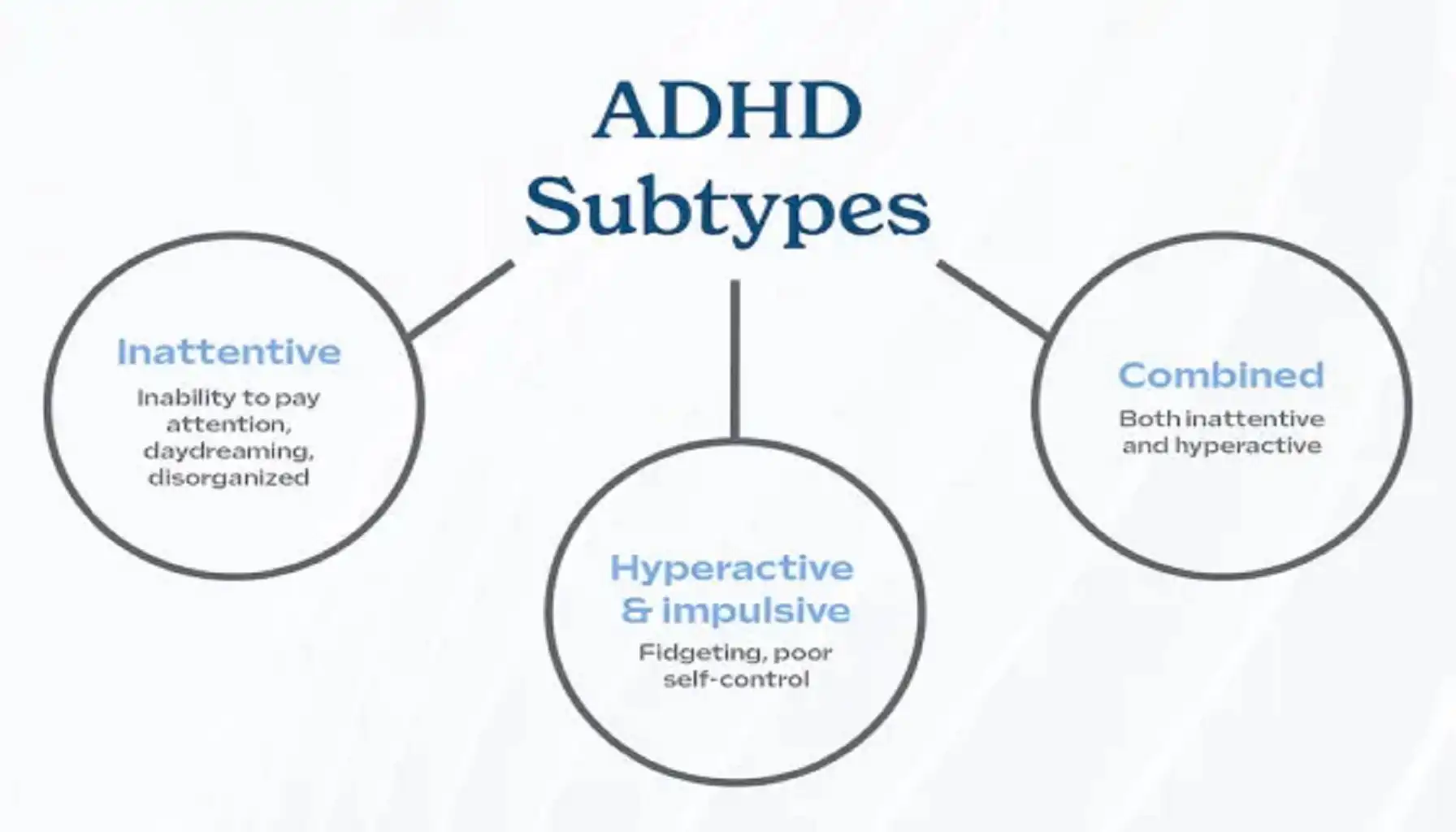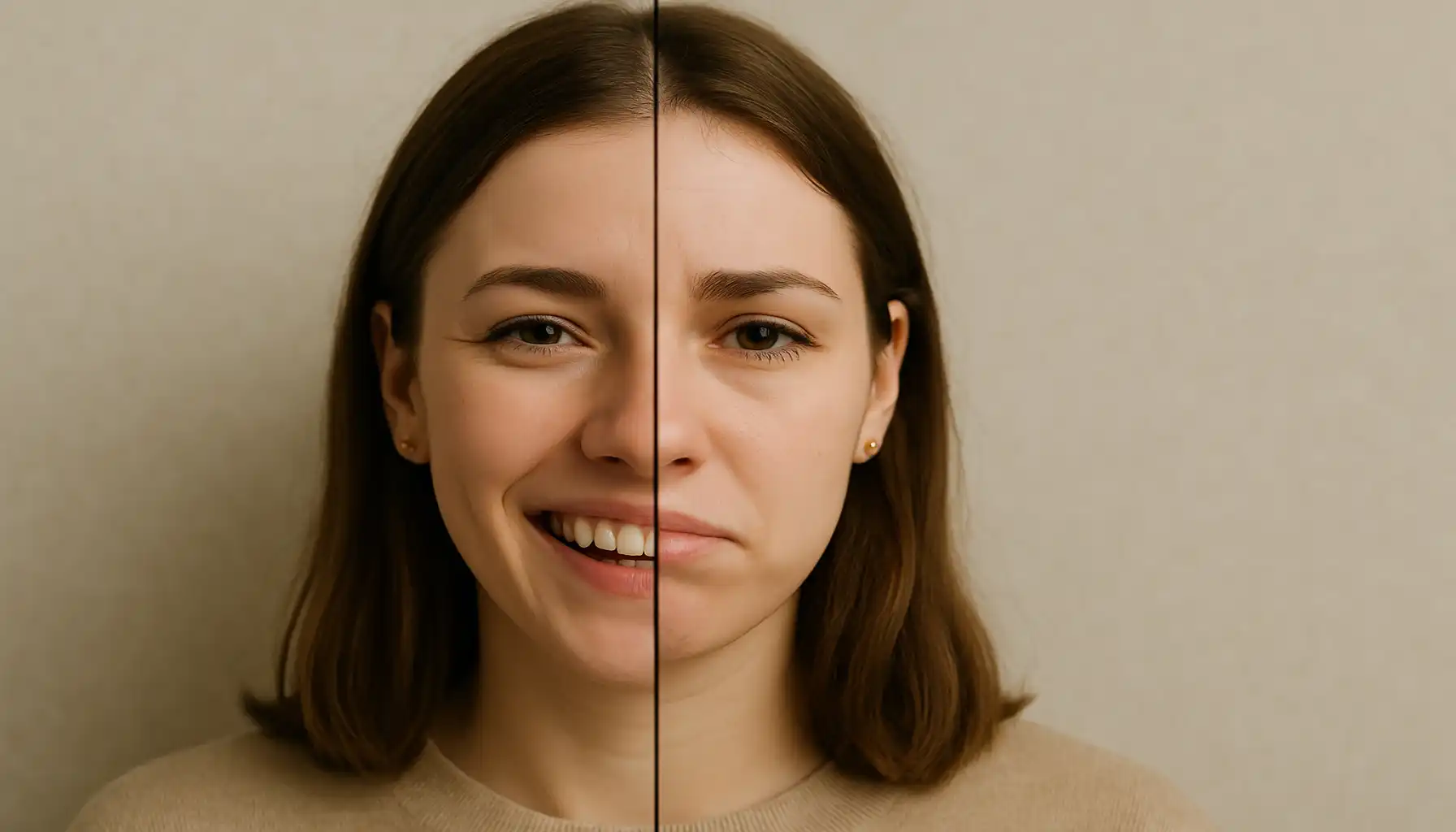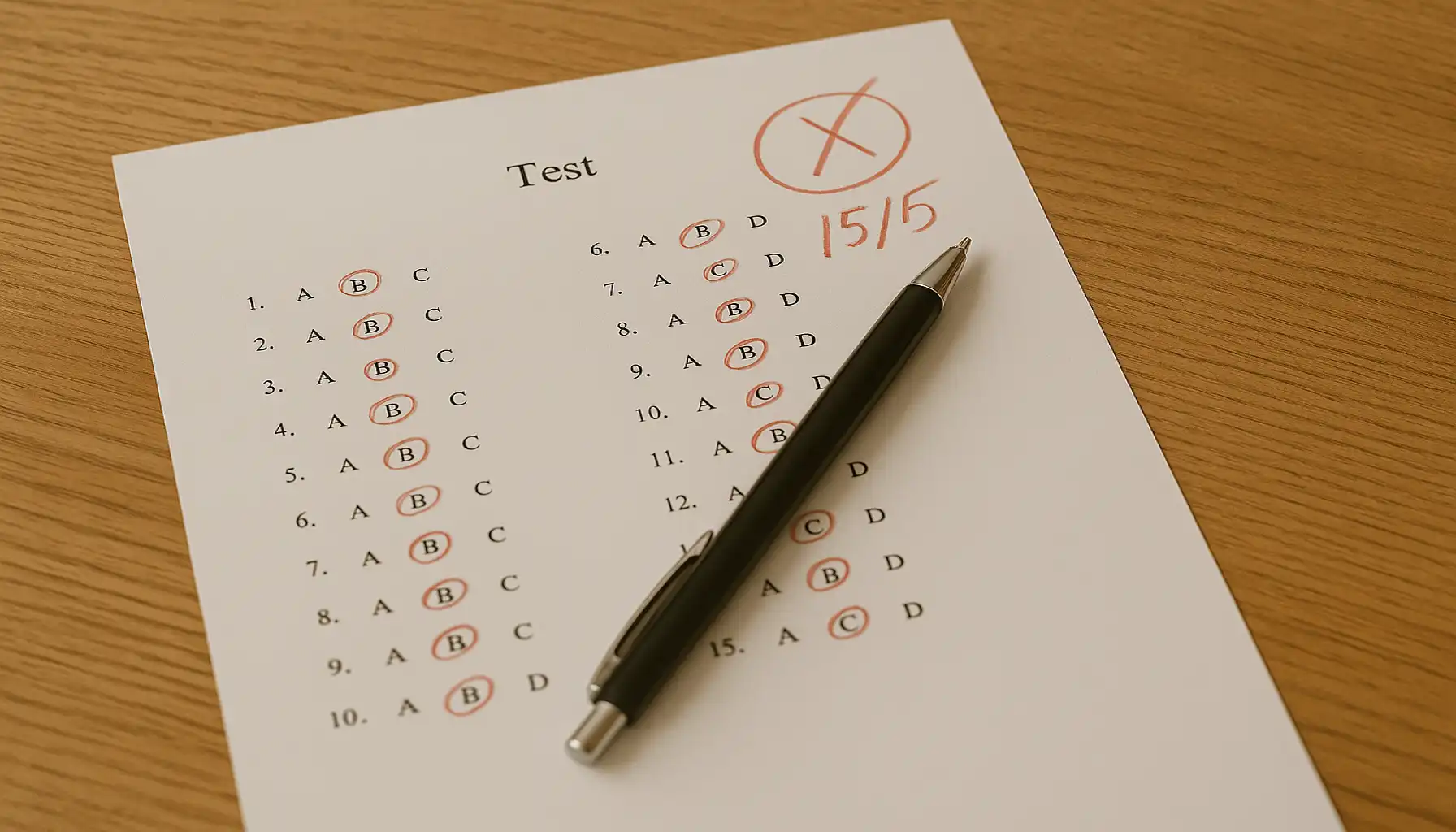Contents:
ADHD (Attention-Deficit/Hyperactivity Disorder) is a neurodevelopmental condition that affects how the brain regulates attention, impulse control, activity levels. It is typically diagnosed in childhood but can persist into adolescence and adulthood.
ADHD is linked to differences in brain structure and function, particularly in areas that control executive functioning, such as the prefrontal cortex. It often involves dysregulation of dopamine and norepinephrine neurotransmitters.
Treatment:
Medications: Stimulants (e.g., methylphenidate, amphetamines), non-stimulants (e.g., atomoxetine);
Therapy: Behavioral therapy, cognitive behavioral therapy (CBT), parent training;
Lifestyle adjustments: Structure, organization, sleep hygiene, exercise, concentration game options.

ADHD Symptoms in Adults Women
Symptoms of ADHD in adult women may appear less as hyperactivity and more as internalized struggles with focus, regulation, and self-esteem.
Common Symptoms of ADHD in Women:
Inattention & Executive Dysfunction
Chronic disorganization (home, schedule, belongings)
Frequent forgetfulness (appointments, names, tasks)
Difficulty starting or completing tasks, even when important
Often misplaces items (keys, phone, documents)
Frequently distracted, even during conversations
Poor time management and chronic lateness
Struggles with prioritizing tasks or following through on plans
Emotional Dysregulation
Mood swings and sensitivity to criticism
Difficulty calming down when upset
Low frustration tolerance
Feelings of overwhelm in daily life
Tendency to “shutdown” under stress
Hyperactivity/Impulsivity (Often Internalized)
Inner restlessness or racing thoughts
Talking excessively or interrupting others
Difficulty relaxing or enjoying leisure time
Impulsive decisions (spending, changing plans, blurting out)
Constant multitasking, rarely finishing any one task
Social & Relational Challenges
Difficulty maintaining long-term relationships due to inconsistency or emotional reactivity
Interrupting, oversharing, or struggling with boundaries in conversation
Overcommitting and burnout due to people-pleasing tendencies
Sensitivity to rejection (Rejection Sensitive Dysphoria, or RSD)
Masking & Compensation
Perfectionism to hide perceived failures
Overpreparation, overexplaining, or overworking to “cover up” difficulties
High-functioning appearance masking deep internal exhaustion or chaos

Uncommon ADHD Symptoms in Women
Rejection Sensitivity Dysphoria (RSD) – intense emotional pain from perceived criticism or failure
Chronic people-pleasing – masking symptoms through overcompensation
Hyperfocus – becoming so absorbed in tasks that basic needs are ignored
Emotional exhaustion – from constant masking and mental effort
Sleep dysregulation – racing thoughts at night, delayed sleep phase
Somatic complaints – headaches, stomach pain, tension (often stress-related)
Impulsive caretaking – overcommitting to others’ needs, neglecting own boundaries
Overthinking minor decisions – paradoxically linked to executive dysfunction
Low self-trust – constant self-doubt and fear of being “lazy” or “flaky”
Sensory overload mistaken for anxiety – particularly with noise, fabric, or smells
Common Misdiagnoses in Adult Women
Generalized Anxiety Disorder (GAD)
Depression
Bipolar II Disorder
Borderline Personality Disorder (BPD)

Key Risks of Signs and Symptoms of ADHD in Women Adult
Women with undiagnosed ADHD are at greater risk for:
Burnout
Disordered eating
Substance use (as a form of self-regulation)
Postpartum depression
ADHD Symptoms in Women vs Men
Category | ADHD in Adult Women Symptoms | |
Core Presentation | More often inattentive type or combined with internalized symptoms | More often hyperactive-impulsive or combined type with externalized behaviors |
Attention | Forgetfulness, disorganization, poor task follow-through, mental fatigue | Distractibility, task-switching, unfinished projects |
Hyperactivity | Internal restlessness, anxiety-like racing thoughts, constant multitasking | Physical restlessness, fidgeting, difficulty staying seated or still |
Impulsivity | Verbal impulsivity, oversharing, impulsive spending, emotional outbursts | Risk-taking, interrupting, reckless behaviors |
Emotional Regulation | Heightened emotional sensitivity, mood swings, Rejection Sensitive Dysphoria (RSD) | Anger outbursts, irritability, lower frustration tolerance |
Masking & Compensation | High masking behaviors, perfectionism, overachievement to hide symptoms | Less likely to mask; symptoms more openly disruptive or noticeable |
Social Functioning | Relationship stress due to emotional dysregulation or forgetfulness | Social conflict due to impulsive speech or poor boundaries |
Self-Image | Chronic self-doubt, low self-esteem, internalized guilt | May externalize blame or minimize difficulties |
Common Comorbidities | Anxiety, depression, eating disorders, PTSD, PMDD | Oppositional Defiant Disorder (ODD), substance use disorder, conduct disorder |
Hormonal Influence | Symptoms often fluctuate with menstrual cycle, pregnancy, or menopause | Less hormonal variability affecting symptom severity |
Diagnosis Likelihood | Often missed or delayed until adulthood or after life crises (e.g., motherhood) | More likely to be diagnosed in childhood, especially if disruptive in school |
Autism and ADHD in Women Symptoms
Both share several overlapping features, especially in how they present differently from typical male patterns — which shaped diagnostic criteria. As a result, both are frequently underdiagnosed or misdiagnosed in females. However, they are distinct neurodevelopmental conditions with unique diagnostic frameworks.
Symptoms of Autism and ADHD in Women
Feature | ADHD in Women | Autism (ASD) in Women |
Neurological Basis | Impaired executive function (attention, inhibition, working memory) | Impaired social communication + restrictive/repetitive behavior |
Core Symptoms | ADHD symptoms in women adults: Inattention, distractibility, emotional dysregulation, impulsivity | Social difficulties, intense interests, sensory sensitivities |
Internal Presentation | Mental restlessness, disorganization, masking with overcompensation | Masking of autistic traits (mimicking, “social chameleon” behavior) |
Common Coping Mechanisms | Over-preparing, perfectionism, humor to deflect | Social scripting, mimicking, avoidance of social fatigue |
Masking Behavior | Extremely common; leads to burnout and delayed diagnosis | Extremely common; often more developed than in autistic men |
Emotional Regulation Issues | Mood swings, rejection sensitivity, overthinking | Alexithymia (difficulty identifying emotions), emotional shutdowns |
Social Traits | Friendly but may interrupt, talk excessively, or lose attention | May appear socially competent but struggle internally with interpretation |
Sensory Processing | Often present (e.g., sensitivity to noise or texture), but less defining | More pronounced and central to diagnosis |
Special Interests | Can hyperfocus, but interests tend to shift frequently | Deep, narrow interests; may be intense but socially “acceptable” (e.g., books, animals) |
Co-occurring Conditions | Anxiety, depression, PMDD, eating disorders | Anxiety, depression, OCD, often also ADHD |
Diagnosis Age | Frequently missed until late teens or adulthood | Often diagnosed in adulthood or misdiagnosed as shy, anxious, or quirky |
ADHD Symptoms in Black Women vs White Women
Neurologically, ADHD symptoms are not different.
What are symptoms of ADHD in women? The core ones (inattention, impulsivity, emotional dysregulation) are the same.
But how they are expressed, perceived, and diagnosed can differ due to cultural expectations, social roles, and systemic bias.
Key Differences: ADHD in Black Women Symptoms vs White Women
Aspect | Black Women | White Women |
Diagnosis | Often delayed or missed due to bias, stigma | More likely diagnosed earlier or self-identified |
Masking | Suppress symptoms to avoid being labeled “angry” or “lazy” | Mask via perfectionism, overachievement |
Misinterpretation | Assertiveness seen as defiance or mood disorder | Distractibility seen as stress or anxiety |
Access to care | Limited by systemic barriers and cultural stigma | More access to private mental health resources |
Emotional impact | Internalized stress, racial trauma, burnout | Anxiety, low self-worth, burnout |
Symptoms of ADHD in black women are the same, but lived experience and diagnosis paths differ. Cultural context affects how symptoms are interpreted and treated.

ADHD Symptoms in Adult Women Checklist
Mark each statement that often applies to you. Count how many you check.
Attention & Focus
Emotional Regulation
Organization & Time Management
Hyperactivity (Often Internalized)
Masking & Coping
ADHD Symptoms in Women Test Scoring (Not Diagnostic):
0–10: Some traits; possibly situational or mild executive issues
11–20: Patterns consistent with ADHD traits in adult women
21+: Strong indication of ADHD-like classic and inattentive ADHD symptoms in women; consider formal evaluation

Recommendations from Michael Trent
Get Diagnosed: Don’t ignore any classic or inattentive ADHD in women symptoms — seek formal evaluation by a specialist familiar with adult ADHD in women.
Use Medication + Therapy: Stimulants or non-stimulants can help. Combine these ADHD symptoms in women treatment with CBT or ADHD coaching for best results.
- Watch Hormonal Cycles: Track symptoms around periods, postpartum, or menopause — hormones can worsen symptoms of inattentive ADHD in women.





